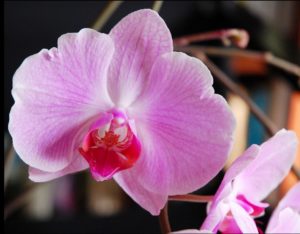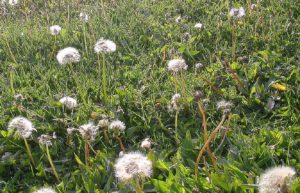
Art Therapy
“One of the basic rules of the universe is that nothing is perfect. Perfection simply doesn’t exist…..Without imperfection, neither you nor I would exist” ― Stephen Hawking




Looking out of my window in Israel, I see my garden coming to life. The dry earth and leafless branches of the rose bushes suddenly came to life after the rains of the last 2 weeks. Not only leaves have sprouted, I can already see some rose buds developing. The ground is teeming with green growth from the bulbs that were sleeping underground, and the freesias, narcissus and tulips are spreading their unique-shaped leaves.
On one of the sites I visit occasionally there was an interesting article discussing the resemblance of resilience in adults to flowers. There was also an interesting “sensitivity test” for adults which I took; I found that I am a Tulip.
The program divides people into 3 groups of flowers: Dandelions, Tulips, and Orchids, each with different sensitivity criteria and attributes. They claim that the Tulip is more sensitive than the Dandelion, but less fragile than the Orchid.
Apparently there are 3 types of flowers associated with people’s sensitivities, reflecting their resilience in life. The original comparison of people’s resilience talked only about Dandelions and Orchids. Dandelions can grow and bloom under adverse conditions. They are resistant to even the most aggressive action against them. On the other end of the spectrum is the Orchid, which is fabled to be sensitive, difficult to grow, and needs a lot of specialized treatment to survive, let alone bloom.

Being an orchid grower, I do not fully agree with the popular belief regarding the difficulty of cultivating and making orchids bloom. First of all you need to identify the type of orchid you’re dealing with. Orchids vary, and need different matter to grow on. Each one likes a certain environment and light conditions. Just like children who are considered to have special needs, we have to identify and provide the environmental conditions that will make them grow and bloom. Once you find the correct soil, light, and temperature, the only other problem is over-watering. They do not like to be flooded and sitting in water. Just like “Orchid” children who do not respond well to over-stimulation and flooding with adverse attention, they withstand neglect or less attention for a while better than constant coddling and nagging or abuse.
With our orchids, my husband and I have different tasks.
I look after replanting, finding the right container, as well as identifying places of new growth to cut and propagate into new orchids. My husband does the watering. He has it down to an art. Once a week he puts a sieve on a pail, and places one plant at a time on the sieve, and waters it over the pail so the extra water drains out. He uses water which stood for a while in an old Brita jug in order to rid it from damaging chemicals. During blooming time he adds some fertilizer to the water at every watering. The blossoms are amazing. They last for a month at a time, and reward us with unbelievable beauty and joy. You see, we learned that in order to raise healthy and blossoming Orchids, like children, there needs to be a joint coordinated effort of care to provide the right conditions and specific type of balance. The more sensitive the child and the more demanding or harmful the environmental conditions, the more we need to recognize the type of care that needs to be provided so they can grow instead of wilt.
 Sadly, not only orchids can wilt from adverse environmental conditions. Tulips are also prone to be stunted. And even the sturdy dandelion does not survive abusive treatment. In their natural habitat, orchids grow outside, on tree trunks or on the ground, nurtured by the rain and helped by insects. Tulips come up every year if the conditions are right; they need time for dormancy in the cold of winter. Dandelions spread over vast areas but sense their boundaries naturally. It is only when we are planted in an environment where our natural needs are not met that we need extra care.
Sadly, not only orchids can wilt from adverse environmental conditions. Tulips are also prone to be stunted. And even the sturdy dandelion does not survive abusive treatment. In their natural habitat, orchids grow outside, on tree trunks or on the ground, nurtured by the rain and helped by insects. Tulips come up every year if the conditions are right; they need time for dormancy in the cold of winter. Dandelions spread over vast areas but sense their boundaries naturally. It is only when we are planted in an environment where our natural needs are not met that we need extra care.
Sometimes we are able to recognize what we need and take care of ourselves, and when allowed, we will be able to grow. We can also learn to recognize traumatic situations and how to integrate the trauma and feel whole again. Reorganizing in order to feel well allows us to grow past the trauma and become more resilient. Observing and recognizing the signals within our body allows us to know when we need to ask for help. Our mental capacity and experience will guide us to find it. I think I had the good fortune of receiving loving care when I was a little bulb, so that the transplanting and traumatic events I experienced enabled me to get stronger. I grew and produced three more bulbs which are now planted in different places. I reached a blessed age in which I continue the cycle of resting and growing and blooming again every year with new and fresh creative colors. I learned that tulips are both resilient and sensitive in balanced proportion.
The results of the test placed me in the middle of the sensitivity spectrum with the explanation: “This means that you are generally able to persist in difficult situations even though you find them stressful. At the same time, you do pick up on meaningful details in your environment and find things like music and arts enjoyable.”
I wish for all you Dandelions, Tulips, and Orchids to find your ideal conditions to grow, flourish, and bloom in the upcoming year. Imagine what a great colourful garden it can be with each adding their color and shape and uniqueness to this world. Happy Holidays and a Happy New Year.